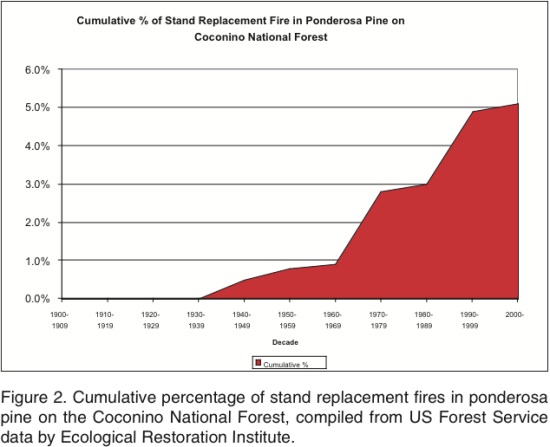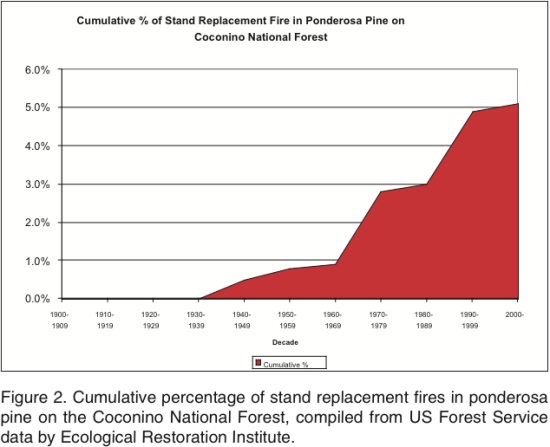
A crazy-big forest fire is raging through Arizona, battled by 2,300 firefighters and covering 287 square miles. It's the third largest forest fire in the state's history. But is it a product of climate change?
The short answer is that we have no idea until someone digs in to the specifics of this particular event. But the more important answer comes from a document put out by the Arizona Cooperative Agriculture Extension, which notes that a warmer, drier climate and more extreme swings between the multi-year El Nino / La Nina weather patterns are setting the state up for more wildfires than ever.
The crazy thing is, it's not just hotter, drier conditions (La Nina) that cause more forest fires. The wetter winter weather that comes with an El Nino "condition[s] the landscape for wildfire by providing moisture to grow biomass," i.e. underbrush and more trees. Then, when the weather swings the opposite way, to a La Nina, the dry conditions are conducive to wildfires.
We already know that climate change is going to lead to more extreme weather and wider swings in the El Nino / La Nina cycle. What's intriguing is that the cycling between these extremes is what sets up the conditions for more forest fires.
Another important factor is, of course, forest management. When forests are prevented from burning, or underbrush isn't cleared out, it can lead to more extreme fires.
The report concludes:
"The increasing frequency of extreme fire weather conditions and drought-stressed vegetation could combine to promote enhanced wildfire activity under a changing southwestern U.S. climate."




